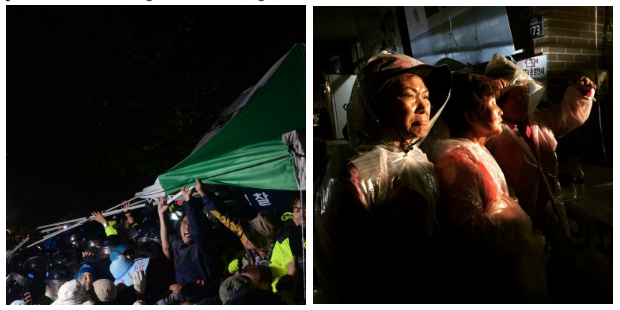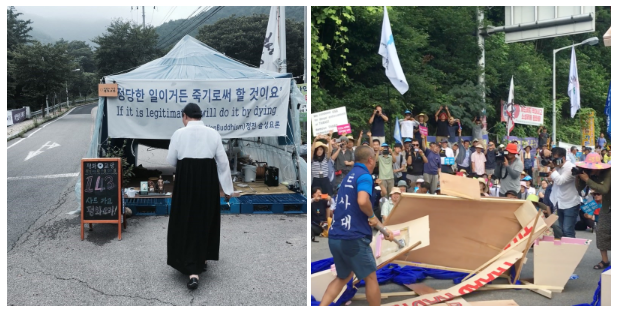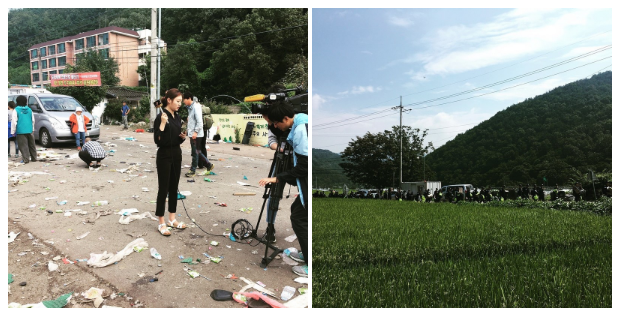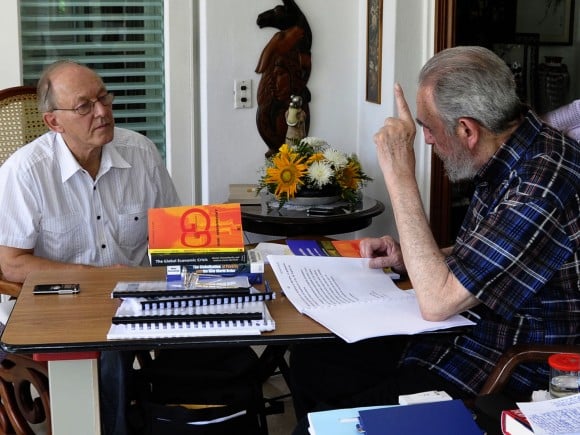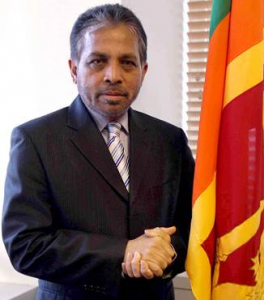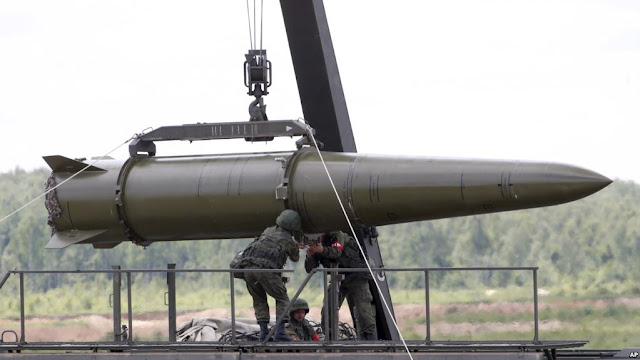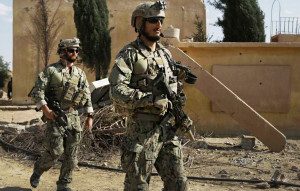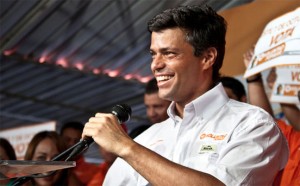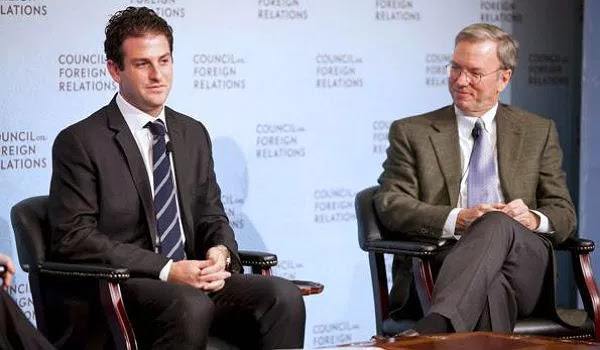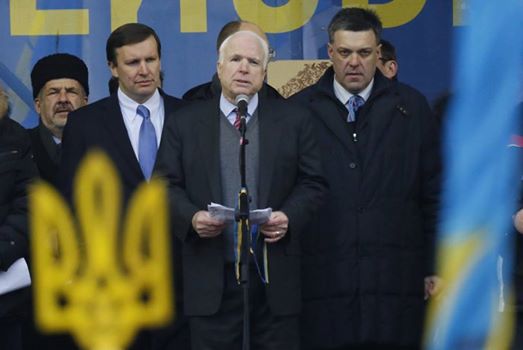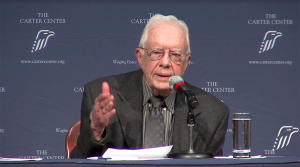We the undersigned, more than 180 scientists and doctors from 36 countries, recommend a moratorium on the roll-out of the fifth generation, 5G, for telecommunication until potential hazards for human health and the environment have been fully investigated by scientists independent from industry. 5G will substantially increase exposure to radiofrequency electromagnetic fields (RF-EMF) on top of the 2G, 3G, 4G, Wi-Fi, etc. for telecommunications already in place. RF-EMF has been proven to be harmful for humans and the environment.
5G leads to massive increase of mandatory exposure to wireless radiation
5G technology is effective only over short distance. It is poorly transmitted through solid material. Many new antennas will be required and full-scale implementation will result in antennas every 10 to 12 houses in urban areas, thus massively increasing mandatory exposure.
With ”the ever more extensive use of wireless technologies,” nobody can avoid to be exposed. Because on top of the increased number of 5G-transmitters (even within housing, shops and in hospitals) according to estimates, ”10 to 20 billion connections” (to refrigerators, washing machines, surveillance cameras, self-driving cars and buses, etc.) will be parts of the Internet of Things. All these together can cause a substantial increase in the total, long term RF-EMF exposure to all EU citizens.
Harmful effects of RF-EMF exposure are already proven
Over 230 scientists from more than 40 countries have expressed their “serious concerns” regarding the ubiquitous and increasing exposure to EMF generated by electric and wireless devices already before the additional 5G roll-out. They refer to the fact that ”numerous recent scientific publications have shown that EMF affects living organisms at levels well below most international and national guidelines”. Effects include increased cancer risk, cellular stress, increase in harmful free radicals, genetic damages, structural and functional changes of the reproductive system, learning and memory deficits, neurological disorders, and negative impacts on general well-being in humans. Damage goes well beyond the human race, as there is growing evidence of harmful effects to both plants and animals.
After the scientists’ appeal was written in 2015 additional research has convincingly confirmed serious health risks from RF-EMF fields from wireless technology. The world’s largest study (25 million US dollar) National Toxicology Program (NTP), shows statistically significant increase in the incidence of brain and heart cancer in animals exposed to EMF below the ICNIRP (International Commission on Non-Ionizing Radiation Protection) guidelines followed by most countries. These results support results in human epidemiological studies on RF radiation and brain tumour risk. A large number of peer-reviewed scientific reports demonstrate harm to human health from EMFs.
The International Agency for Research on Cancer (IARC), the cancer agency of the World Health Organization (WHO), in 2011 concluded that EMFs of frequencies 30 KHz – 300 GHz are possibly carcinogenic to humans (Group 2B). However, new studies like the NTP study mentioned above and several epidemiological investigations including the latest studies on mobile phone use and brain cancer risks confirm that RF-EMF radiation is carcinogenic to humans.
The EUROPA EM-EMF Guideline 2016 states that ”there is strong evidence that long-term exposure to certain EMFs is a risk factor for diseases such as certain cancers, Alzheimer’s disease, and male infertility…Common EHS (electromagnetic hypersensitivity) symptoms include headaches, concentration difficulties, sleep problems, depression, lack of energy, fatigue, and flu-like symptoms.”
An increasing part of the European population is affected by ill health symptoms that have for many years been linked to exposure to EMF and wireless radiation in the scientific literature. The International Scientific Declaration on EHS & multiple chemical sensitivity (MCS), Brussels 2015, declares that: “In view of our present scientific knowledge, we thereby stress all national and international bodies and institutions…to recognize EHS and MCS as true medical conditions which acting as sentinel diseases may create a major public health concern in years to come worldwide i.e. in all the countries implementing unrestricted use of electromagnetic field-based wireless technologies and marketed chemical substances… Inaction is a cost to society and is not an option anymore… we unanimously acknowledge this serious hazard to public health…that major primary prevention measures are adopted and prioritized, to face this worldwide pan-epidemic in perspective.”
Precautions
The Precautionary Principle (UNESCO) was adopted by EU 2005: ”When human activities may lead to morally unacceptable harm that is scientifically plausible but uncertain, actions shall be taken to avoid or diminish that harm.”
Resolution 1815 (Council of Europe, 2011): ”Take all reasonable measures to reduce exposure to electromagnetic fields, especially to radio frequencies from mobile phones, and particularly the exposure to children and young people who seem to be most at risk from head tumours…Assembly strongly recommends that the ALARA (as low as reasonably achievable) principle is applied, covering both the so-called thermal effects and the athermic [non-thermal] or biological effects of electromagnetic emissions or radiation” and to ”improve risk-assessment standards and quality”.
The Nuremberg code (1949) applies to all experiments on humans, thus including the roll-out of 5G with new, higher RF-EMF exposure. All such experiments: ”should be based on previous knowledge (e.g., an expectation derived from animal experiments) that justifies the experiment. No experiment should be conducted, where there is an a priori reason to believe that death or disabling injury will occur; except, perhaps, in those experiments where the experimental physicians also serve as subjects.” (Nuremberg code pts 3-5). Already published scientific studies show that there is ”a priori reason to believe” in real health hazards.
The European Environment Agency (EEA) is warning for ”Radiation risk from everyday devices” in spite of the radiation being below the WHO/ICNIRP standards. EEA also concludes: ”There are many examples of the failure to use the precautionary principle in the past, which have resulted in serious and often irreversible damage to health and environments…harmful exposures can be widespread before there is both ‘convincing’ evidence of harm from long-term exposures, and biological understanding [mechanism] of how that harm is caused.”
“Safety guidelines” protect industry — not health
The current ICNIRP ”safety guidelines” are obsolete. All proofs of harm mentioned above arise although the radiation is below the ICNIRP “safety guidelines”. Therefore new safety standards are necessary. The reason for the misleading guidelines is that “conflict of interest of ICNIRP members due to their relationships with telecommunications or electric companies undermine the impartiality that should govern the regulation of Public Exposure Standards for non-ionizing radiation…To evaluate cancer risks it is necessary to include scientists with competence in medicine, especially oncology.”
The current ICNIRP/WHO guidelines for EMF are based on the obsolete hypothesis that ”The critical effect of RF-EMF exposure relevant to human health and safety is heating of exposed tissue.” However, scientists have proven that many different kinds of illnesses and harms are caused without heating (”nonthermal effect”) at radiation levels well below ICNIRP guidelines.
We urge EU:
1) To take all reasonable measures to halt the 5G RF-EMF expansion until independent scientists can assure that 5G and the total radiation levels caused by RF-EMF (5G together with 2G, 3G, 4G, and WiFi) will not be harmful for EU-citizens, especially infants, children and pregnant women, as well as the environment
2) To recommend that all EU countries, especially their radiation safety agencies, follow Resolution 1815 and inform citizens, including, teachers and physicians, about health risks from RF-EMF radiation, how and why to avoid wireless communication, particularly in/near e.g., daycare centers, schools, homes, workplaces, hospitals and elderly care.
3) To appoint immediately, without industry influence, an EU task force of independent, truly impartial EMF-and-health scientists with no conflicts of interest1 to re-evaluate the health risks and:
a) To decide about new, safe “maximum total exposure standards” for all wireless communication within EU.
b) To study the total and cumulative exposure affecting EU-citizens.
c) To create rules that will be prescribed/enforced within the EU about how to avoid exposure exceeding new EU ”maximum total exposure standards” concerning all kinds of EMFs in order to protect citizens, especially infants, children and pregnant women.
4) To prevent the wireless/telecom industry through its lobbying organizations from persuading EUofficials to make decisions about further propagation of RF radiation including 5G in Europe.
5) To favor and implement wired digital telecommunication instead of wireless.
We expect an answer from you no later than October 31, 2017 to the two first mentioned signatories about what measures you will take to protect the EU-inhabitants against RF-EMF and especially 5G radiation. This appeal and your response will be publicly available.
Respectfully submitted,
Rainer Nyberg, EdD, Professor Emeritus (Åbo Akademi), Vasa, Finland ([email protected])
Lennart Hardell, MD, PhD, Professor (assoc) Department of Oncology, Faculty of Medicine and Health, University Hospital, Örebro, Sweden ([email protected])
Note
1 Avoid similar mistakes as when the Commission (2008/721/EC) appointed industry supportive members for SCENIHR, who submitted to EU a misleading SCENIHR report on health risks, giving telecom industry a clean bill to irradiate EU-citizens. The report is now quoted by radiation safety agencies in EU.
Signatories to Scientists’ 5G Appeal
Note: The endorsements are personal and not necessarily supported by the affiliated universities or organizations. Updated with new Signatories: September 15, 2017
EU and European Nations
AUSTRIA
Gerd Oberfeld, MD, Public Health Officer, Salzburg
BELGIUM
Marie-Claire Cammaerts, Dr, retired, Free University of Brussels, Bruxelles André Vander Vorst, Prof. em. Belgium
BULGARIA
Marko Markov, Professor Emeritus, Ph.D. in biophysics, Sofia University, Research international
CYPRUS
Stella Canna Michaelidou, Dr, Chemist Expert on Environment, Health and Food Safety, President of the Cyprus National Committee on Environment and Children’s Health
FINLAND
Marjukka Hagström, LL.M, M.Soc.Sc., Senior researcher, The Finnish Electrosensitivity Foundation, Turku
Osmo Hänninen, PhD, Professor Emeritus, Dept. of Physiology, Faculty of Medicine, University of Eastern Finland; Editor-In-Chief, Pathophysiology, Kuopio
Georgiy Ostroumov, PhD (in the field of RF EMF), independent researcher
FRANCE
Marc Arazi, MD, Physician (Whistleblower on Phonegate international scandal), Nogent-sur-Marne
Dominique Belpomme, MD, MSc, Full Professor in Medical Oncology; Director of ECERI, Paris University, Paris & European Cancer and Environment Research Institute, Brussels
Philippe Irigaray, PhD, Scientific Director, Association for Research on Treatment against Cancer (ARTAC), Paris; European Cancer and Environment Research Institute (ECERI), Brussels
Vincent Lauer, Ing. ECP, Independent Researcher, La Chapelle sur Erdre
Annie J Sasco, MD, DrPH, Former Director of Research, French National Institute of Health and Medical Research, Former Chief of Epidemiology for Cancer Prevention at the International Agency for Research on Cancer and Former Acting Chief of Program for Cancer Control, World Health Organization, Bordeaux
GERMANY
Franz Adlkofer, MD, Professor, Pandora-Foundation for Independent Research
Christine Aschermann, MD (retired) member of the Kompetenzinitiative e.V., Leutkirch
Mario Babilon, Dr. rer. nat., Professor, Baden-Wuerttemberg Cooperative State University Stuttgart
Wolf Bergmann, Dr. med., Kompetenzinitiative zum Schutz von Mensch, Umwelt und Demokratie e.V., Freiburg
Rainer Frentzel-Beyme, MD, Professor emeritus, University of Bremen.
Helmut Breunig, Diploma degree in forestry, Specialty: Radio frequency injuries on trees around phone masts, Osterode am Harz
Klaus Buchner, Dr. rer. nat., Professor, MEP – Member of the European Parliament, Kompetenzinitiative zum Schutz von Mensch, Umwelt und Demokratie e.V., München
Horst Eger, Dr. med., Ärztlicher Qualitätszirkel ”Elektromagnetische Felder in der Medizin – Diagnostik, Therapie, Umwelt”, Naila
Karl Hecht, Dr, Professor of pathophysiology and neurophysiology (Emeritus of the Medical center Charite), Berlin
Peter Hensinger, MA, diagnose:funk, consumer protection organisation, Stuttgart
Markus Kern, Dr. med., Kompetenzinitiative zum Schutz von Mensch, Umwelt und Demokratie e.V., Kempten
Florian M. König, Dr.Sc. Man. Dir. & Science Header of the Company/Institute “Florian König Enterprises GmbH”
Andrea Leute, Dr. med., Ärzteinitiative Mobilfunk Allgäu-Bodensee-Oberschwaben, Überlingen
Martin Lion, Dr. med., Allgemeinmedizin – Homöopathie, Ulm
Peter Ludwig, Dr. phil., Kompetenzinitiative zum Schutz von Mensch, Umwelt und Demokratie e.V., Saarbrücken
Willi Mast, Dr., Arzt für Allgemeinmedizin und Innere Medizin, Gelsenkirchen
Joachim Mutter, Dr. med., Paracelsus Clinic / Switzerland, Kompetenzinitiative zum Schutz von Mensch, Umwelt und Demokratie e.V., Murg
Gertraud Teuchert-Noodt, Dr., Professorin der Neurobiologie i.R., Universität Bielefeld
Peter Ohnsorge, Dr. med., European Academy for Environmental Medicine
Karl Richter, Dr. phil., Professor, Kompetenzinitiative zum Schutz von Mensch, Umwelt und Demokratie e.V., St. Ingbert
Claus Scheingraber, Dr. med. dent., German Working Group Electro-Biology, Brunnthal,
Cornelia Waldmann-Selsam, Dr.med., Competence Initiative for the Protection of Humanity, Environment and Democracy e.V., Bamberg
Werner Thiede, Dr. theol., Professor, Pfarrer der Evangelisch-Lutherischen Landeskirche in Bayern und Publizist, Neuhausen
Helmut Wagner, Dr. med., Ophthalmologist, Stuttgart
Harald Walach, Professor, PhD in psychology, PhD in theory and history of science, Change Health Science Institute, Berlin; affiliation: Witten-Herdecke University, Poznan Medical University, Poland
Ulrich Warnke, Dr.rer.nat., Academic Superior Council (retired) University of Saarland
Isabel Wilke, Diplom-Biologin, Editor ElektrosmogReport, Kassel/Berlin
Roland Wolff, Dipl.-Phys., Medical Physicist, Bremen
Ortwin Zais, PhD (Dr. med.), European Academy for Environmental Medicine
GREECE
Christos Georgiou, PhD, Member, Scientific Secretariat of ICEMS; Professor of Biochemistry, Biology Department, University of Patras, Patras
Theodore P. Metsis, PhD, Electrical, Mechanical, Environmental Engineer, Consultant, Athens
ITALY
Domenico Agrusta, Medicine and surgery, specialist in dentistry (Odontostomatologia) selfemployed, Member of ISDE, Taranto
Fernanda Amicarelli, Full Professor in Applied Biology, Department of Life, Health and Environmental Sciences, University of L’Aquila, L’Aquila
Fiorella Belpoggi, Dr., Director, Research Department, Ramazzini Institute, Bologna
Sergio Bernasconi, Full Professor of Pediatrics, former Director, Pediatric Department, Editor emeritus: Italian Journal of Pediatrics, University of Parma
Dr Franco Berrino, MD, PhD, former Director, Department of Preventive and Predictive Medicine, Istitutonazionale dei Tumori, Milan
Ernesto Burgio, MD, Pediatrician, ECERI – European Cancer and Environment Research Institute (Bruxelles)
Dr Franco Cherubini, Degree in medicine and surgery, Self-employed, Vetralla
Dott. Agostino Di Ciaula, President of Scientific Committee, Italian Society of Doctors for the Environment – ISDE Italy, Arezzo
Dott. Andrea Cormano, MD, Italian Society of Doctors for the Environment – ISDE, Benevento
Ugo Corrieri, Degree in medicine and surgery at Università Cattolica del S. Cuore, Teacher at Scuola Romana di Psicoterapia Familiare, President of ISDE-Doctors for the Environment in Grosseto, Coordinator of ISDE-Doctors for the Environment for Central Italy, Grosseto- Rome
Dr Patrizia Difonte, Physician, Surgeon, General practitioner and occupational medicine, Associazione Italiana Elettrosensibili, Lonate Pozzolo (Varese)
Anna Maria Falasconi, Medical Doctor, Primary Care Pediatrician, National Health System, Rome
Dott. Filippo Maria di Fava, Laurea in Medicina e Chirurgia, Libero professionista, Roma
Dr. Mario Frusi, MD, medico, Cuneo
Dr. Stefano Gallozzi, Astrophysician and technologist at the INAF Italian National Astrophysical Institute in the Observatory, President of the Comitato di Tutela e Salvaguardia dell’Ambiente in Monte Porzio Catone (ONLUS association), Rome
Dott. Roberto Gava, Pharmacologist and Toxicologist, ISDE, Padua
Teresa Pia Anna Maria Del Gaudio, Degree in Medicine and Surgery, specialist in pediatrics, Medical Manager, ASL Salerno, Roccagloriosa (SA), Italy
Valerio Gennaro, MD, PhD, Head ,Liguria Mesothelioma Registry (COR Liguria), UO Clinical Epidemiology (IST Nord – CBA); IRCCS Policlinico Ospedale San Martino National Cancer Research Institute (IST), Genoa
Patrizia Gentilini, Degree in Medicine ( specialization in Oncology and Hematology). ISDE (International Society Doctor’s for Environment), FORLI’
Livio Giuliani, PhD, Professor, Università dell’Abruzzo – Corso di Laurea in Fisiatria, Chieti
Angelo Levis, PhD. Professor, Biologist, University of Padua
Roberto Lucchini, MD, Professor of Occupational Medicine, University of Brescia
Salvatore Magazù,PhD, Full Professor of Experimental Physics, Dipartimento di Scienze Matematiche e Informatiche, Scienze Fisiche e Scienze della Terra, Università di Messina
Fiorenzo Marinelli, PhD, Institute of Molecular Genetics (IGM), National Research Council (CNR), Member of the International Commission for Electromagnetic Safety (ICEMS), Bologna,
Antonio Maria Pasciuto, Degree in Medicine and Surgery, Specialist in Internal Medicine, President of ASSIMAS (Associazione Italiana Medicina Ambiente e Salute), Rome
Dott. Carlo Ratti, MD, Ordine dei Medici della SPEZIA, Genova Ruggero Ridolfi, MD, Oncologist Endocrinologist, ISDE, Forlì-Cesena,
Dr. Med. Sandro Rinaldi, Laurea in medicina e chirurgia; specializzazione in Allergologia; specializzazione in Ematologia. Medico di medicina generale convenzionato con l’Azienda Sanitaria di Bolzano, Terlano (BZ)
Massimo Melelli Roia, MD, Italian Society of Doctors for the Environment – ISDE, Perugia
Dott. Roberto Romizi, President, Italian Society of Doctors for the Environment – ISDE, Arezzo
Dott.ssa Ida Santellocco, MD, Medico chirurgo, Pediatria, medico chirurgo – pediatra, Roma
Massimo Scalia, Coordinator of the Bioelectromagnetism Section of CIRPS (Interuniversity Research Center for Sustainable Development)
Alessandro Solerio, Degree in Medicine and Surgery, Self-employed, homeopath, Sanremo
Franco Verzella, MD, physician, practice dedicated to autistic children, Bologna,
Myriam Zucca, Dr. ssa, Medical Director, Dermatology, Cagliari University Hospital, Sardinia
MALTA
Pierre Mallia, MD PhD CBiol MPhil MA(Law) DipICGP MMCFD MRCP FRCGP, Professor of Family Medicine, Bioethics & Patients’ Rights; Chairperson National Health Ethics Committee, Dept. of Health Coordinator Bioet
NETHERLANDS
Hugo Schooneveld, PhD, Retired Associate professor (Wageningen Agricultural University), Advisor to the Dutch EHS Foundation, former president of ‘Stichting elektrohypersensitivity’, Wageningen
PORTUGAL
Paulo Vale, PhD, Auxiliary Researcher, Sea and Marine Resources Department, The Portuguese Sea and Atmosphere Institute, Lisbon
SLOVAKIA
Igor Belyaev, PhD, Dr.Sc, Associate Professor, Cancer Research Institute, BMC SAS, Bratislava
Jan Jakus, MD, PhD, DSc., Professor, Jessenius Faculty of Medicine, Comenius University, Martin
Ladislav Janousek, PhD, Professor, Department of Electromagnetic and Biomedical Engineering Faculty of Electrical Engineering, University of Zilina, Žilina
Michal Teplan, PhD, Institute of Measurement Science, Slovak academy of sciences, Bratislava
SPAIN
Alfonso Balmori, BSc, Master in Environmental Education, Biologist. Junta de Castilla y León, Valladolid
José Luis Bardasano, PhD, Biologist and Physician, Prof. of Medical Bioelectomagnetism, Department of Medicine and Medical Specialties, School of Medicine, University of Alcalá. Alcalá de Henares, Madrid
Pilar Muñoz-Calero, MD, President of the Fundación Alborada, Co-director of the Chair of Pathology and Environment, Faculty of Medicine, Universidad Complutense de Madrid (UCM), Madrid
Miguel Lopez-Lazaro, PhD, Associate Professor, Department of Pharmacology, Faculty of Pharmacy, University of Seville
María Elena López Martín, MD, PhD, Associate Professor of Human Anatomy, School of Medicine, University of Santiago de Compostela (USC)
Enrique A. Navarro, PhD, Professor, University of Valencia, Valencia
Claudio Gómez-Perretta, MD, PhD, Chief of Section, Hospital Universitario La Fe, Valencia Ceferino Maestu Unturbe, Ph.D, Prof., Director of the Bioelectromagnetism Laboratory of the Centre for Biomedical Technology (CTB), Polytechnic University of Madrid (UPM).
SWEDEN
Mikko Ahonen, PhD, researcher, Sundsvall
Michael Carlberg, MSc, Department of Oncology, Faculty of Medicine and Health, University Hospital, Örebro
Mikael Eriksson, MD, PhD, Associate Professor, Department of Oncology, Skane University, Hospital, Lund
Lena Hedendahl, MD, Independent Environment and Health Research, Luleå
Olle Johansson, Associate Professor, Experimental Dermatology Unit, Department of Neuroscience, Karolinska Institute, Stockholm
Gunilla Ladberg, PhD, Member of the Board of the Swedish association Vågbrytaren, Lidingö
Leif G. Salford, MD, PhD, Senior Professor of Neurosurgery, Director of the Rausing Laboratory for Translational NeuroOncology, Lund University, Lund
Elsy-Britt Schildt, MD, PhD, Senior Consultant, Department of Oncology and Radiation, County Hospital, Kalmar
Fredrik Söderqvist, PhD, Epidemiologist, Centre for Clinical Research, Uppsala University, Västerås
SWITZERLAND
Daniel Favre, Dr. phil., Biologist, Independent Researcher, Brent
Peter Meier, MD, Facharzt für Innere Medizin FMH, M.Sc. Präventivmedizin, Mitglied der European Academy for Environmental Medicine, Sissach
Michaela Glöckler, MD., Dr. h.c., Pediatrician, Head of the Medical Section of the Goetheanum/Dornach
UK
Erica Mallery-Blythe, MD, BMBS, Founder of PHIRE (Physicians’ Health Initiative for Radiation and Environment) Trustee Radiation Research Trust, Medical Advisor ORSAA (Oceana Radiofrequency Advisory Association), Medical Advisor ES-UK, Soton
David Gee, Visiting Fellow, Institute of Environment, Health and Societies, Brunel University, London
Andrew Goldsworthy, BSc, PhD, Lecturer in Biology (retired), Imperial College London, Monmouth
Isaac Jamieson, PhD, DIC, RIBA, Dip AAS, BSc(Hons) Arch., Biosustainable Design, Aberdeen, UK. International Expert, Thammasat University, Pathumthani, Thailand.
Alasdair Philips, BSc, DAgE, Professional engineer, Powerwatch
Syed Ghulam Sarwar Shah, MBBS, MA, MSc, PhD , Post-Doctoral Research Fellow, Department of Occupational Health, Guy’s and St. Thomas’ NHS Trust; Honorary Research Fellow, Department of Clinical Sciences, Brunel University, London
Sarah Starkey, PhD, Independent Neuroscience and Environmental Health Research
Andrew Tresidder, MD, MBBS, MRCGP, Somerset GP
Other Nations
ARMENIA
Sinerik Ayrapetyan, PhD, Professor, Life Sciences International Postgraduate Educational Center, UNESCO Chair in Life Sciences, Yerevan, Head of Research Council and Chairholder of UNESCO Chair AUSTRALIA
Priyanka Bandara, PhD, Environmental Health Consultant, Castle Hill/Sydney, NSW
Katherine Georgouras, OAM, DDM, FACD, Professor of Dermatology, (semiretired) ,Kenthurst NSW
Ray Kearney OAM, PhD, Honorary Assoc. Professor (retired), Department of Medicine, University of Sydney
Don Maisch, PhD, Independent researcher, author of ”The Procrustean Approach”, Lindisfarne, Tasmania
May Murray, PhD, Independent Environmental Health researcher, Canberra
Elena Pirogova, PhD, Associate Professor, Biomed Eng, BEng (Hons) Chem En, Discipline of Electrical and Biomedical Engineering, School of Engineering, RMIT University
Charles Teo, AM, MBBS, Professor, Neurosurgeon, Prince of Wales Private Hospital, Randwick, NSW, Sydney
Steve Weller, BSc, Founding member of ORSSA, Brisbane
BRAZIL
Orlando Furtado Vieira Filho, PhD, Professor, Cellular & Molecular Biology, Federal University of Rio Grande do Sul
Claudio Enrique Fernández-Rodríguez, PhD, MSEE, Professor, Federal Institute of Rio Grande do Sul, IFRS, Canoas
Alvaro Augusto A. de Salles, PhD, Full Professor, Federal University of Rio Grande do Sul, UFRGS, Porto Alegre
Francisco de Assis Ferreira Tejo (retired) D.Sc., Professor, Grupo de Eletromagnetismo Computacional e Bioeletromagnetismo, Electrical Engineering Dept, Universidade Federal de Campina Grande
CANADA
Frank Clegg, CEO, Canadians for Safe Technology (C4ST); Former President of Microsoft Canada
Paul Héroux, PhD, Occupational Health Program Director, Department of Epidemiology, Biostatistics and Occupational Health, McGill University Medicine, Montreal, PQ
Anthony B. Miller, MD, FRCP, Professor Emeritus, Dalla Lana School of Public Health, University of Toronto,
Malcolm Paterson, PhD, Director, Research Initiatives, BC Cancer Agency Sindi Ahluwalia Hawkins Centre for the Southern Interior, Kelowna, BC
Michael A. Persinger, PhD, Professor, Biomolecular Sciences, Behavioural Neuroscience and Human Studies, Laurentian University, Sudbury, Ontario
Magda Havas, Associate Professor, Trent University, Canada
CHINA
Wenjun Sun, PhD, Professor, Bioelectromagnetics Key Laboratory, Zhejiang University, School of Medicine, Hangzhou
Minglian Wang, M.M. , PhD, Associate Professor, College of Life Science & Bioengineering, Beijing University of Technology (BJUT), Beijing
COLOMBIA
Carlos Sosa, MD, University of Antioquia, Medellín
EGYPT
Nasr Radwan, Prof. Dr., Cairo University, Faculty of Science, Cairo
INDIA
Ganesh Chandra Jagetia, Professor, Just retired from Department of Zoology, Mizoram University, Aizawl, Udaipur
Sareesh Naduvil Narayanan, PhD, Assistant Professor, Department of Physiology, RAK College of Medical Sciences, RAK Medical & Health Sciences University, Ras Al Khaimah, UAE
R. S. Sharma, PhD, Head, Scientist – G & Sr. DDG, Div. of Reproductive Biology, Maternal & Child Health and Chief Project Coordinator – EMF Health Project India, Indian Council of Medical Research, Ansari Nagar, New Delhi
IRAN
Amirnader Emami Razavi, PhD, Executive Manager and Principal Investigator of Iran, National Tumor Bank, Cancer Institute of Iran, Tehran University of Medical Sciences
Dr. Masood Sepehrimanesh, PhD, Assistant Professor, Gastrointestinal and Liver Disease Research Center, Guilan Universtiy of Medical Sciences, Rasht
ISRAEL
Iris Atzmon, MPH, Epidemiology, University of Haifa, Author of ”The Cellular, not what you thought!”, Haifa
Michael Peleg, M.Sc., Radio Communications Engineer and Researcher, Technion, Israel Institute of Technology, Haifa
Elihu D Richter, MD MPH, Professor, Occupational and Environmental Medicine, Hebrew University-Hadassah School of Public Health and Community Medicine, Jerusalem
Yael Stein, MD, Hebrew University – Hadassah Medical Center, Jerusalem
Danny Wolf, MD, Pediatrician, Clialit Health Services Raziel, Netanya Herzelia
JAPAN
Hidetake Miyata, PhD, Associate professor, Department of Physics. Tohoku University
JORDAN
Mohammed Saleh Al Salameh, PhD, Professor, Department of Electrical Engineering, University of Science & Technology, Irbid
KOREA (South)
Kiwon Song, PhD, Professor, Department of Biochemistry, Yonsei University, Seoul Young Hwan Ahn, MD PhD, Professor, Department of Neurosurgery, Ajou Univeristy School of Medicine, Suwon
NEW ZEALAND
Damian Wojcik, MD, MBChB, Medical director/ Northland Environmental health Clinic, Whangare, Northland
NIGERIA
Aneyo Idowu Ayisat, M.Sc., Lecturer, Environmental Biology Unit, Biological Science Department, Yaba College of Technology, Yaba, Lagos
OMAN
Dr Najam Siddiqi, MBBS, PhD, Associate Professor of Anatomy, Oman Medical College, Sohar
RUSSIAN FEDERATION
Yury Grigoriev, Professor, M. Dr Sci., Federal. Medical Biophysical Center, Moscow Maxim V. Trushin, PhD, Associate Professor, Kazan Federal University, Kazan
TURKEY
Osman Cerezci, Professor Dr., Dept. Electrical-Electronics Engineering, Sakarya University, Adapazarı
Suleyman Dasdag, PhD, Prof. Dr., Biophysics Department, Medical School, Istanbul Medeniyet University, Uskudar, Istanbul
Onur Elmas, MD, PhD, Faculty of Medicine, Dept. Of Physiology, Mugla Sitki Kocman University, Mugla
Ayse Inhan Garip, Assoc. Prof., School of Medicine, Biophysics Dept., Marmara Univ., Istanbul
Suleyman Kaplan, PhD, Professor, President of Turkish Society for Stereology, Board member of Journal Chemical Neuroanatomy (Elsevier), Board member of Journal of Microscopy and Ultrastructure (Elsevier), Department of Histology and Embryology, Ondokuz Mayıs University, Samsun
Fulya Kunter, Assistant Professor Dr., Dept. Electrical-Electronics Engineering, Marmara University, Istanbul
Selim Şeker, Professor Dr., Department of Electrical-Electronics Engineering, Bogazici University
Nesrin Seyhan, Prof. Dr., Gazi University Medical Faculty, Founder Head, Biophysics Department; Founding Director, Gazi Non-Ionizing Radiation Protection Centre (GNRK), Ankara
UKRAINE
Olexandr Tsybulin, PhD, Department of Biophysics, Bila Tserkva National Agrarian University
Igor Yakymenko, Prof. Dr, Department of Biochemistry and Environmental Control National University of Food Technologies, Kyiv
USA
David O. Carpenter, MD, Director, Institute for Health and the Environment, A Collaborating Centre of the World Health Organization, University at Albany, Rensselaer, NY
Barry Castleman, ScD, Environmental Consultant, Garrett Park, MD
Devra Davis, PhD, MPH, Visiting Prof. Medicine, Hebrew University, Hadassah Medical Center & Ondokuz Mayis University, Medical School (Turkey); Pres., Environmental Health Trust, Teton Village, WY
Paul Doyon, MA, MAT, EMRS, Independent Researcher, Doyon Independent Research, CA
Arthur Firstenberg, B.A., EMF researcher and author, president Cellular Phone Task Force, New York
Beatrice A. Golomb, MD, PhD, Professor of Medicine, University of California, San Diego, CA
Peter F. Infante, DrPH, Managing Member, Peter F. Infante Consulting, LLC, VA
Toril H. Jelter, MD, MDI Wellness Center, CA
Elizabeth Kelley, MA, Electromagnetic Safety Alliance, Tucson, AZ
Henry Lai, PhD, Professor Emeritus, University of Washington, Seattle, WA
B. Blake Levitt, medical/science journalist, former New York Times contributor, EMF researcher and author
Trevor G Marshall, ME, PhD, Director, Autoimmunity Research Foundation, CA
Ronald Melnick, PhD, Senior Toxicologist, (Retired RF-section leader) US National Toxicology Program, National Institute of Environmental Health Sciences
L. Lloyd Morgan, Senior Research Fellow, Environmental Health Trust, Board Member, International EMF Alliance (IEMFA), CA
S. M. J. Mortazavi, PhD, Professor of Medical Physics, Visiting Scientist, Fox Chase Cancer Center, Philadelphia, PA
Joel M. Moskowitz, PhD, Director, Center for Family and Community Health, School of Public Health, University of California, Berkeley, CA
Martin Pall, BA, PhD, Professor Emeritus (Biochemistry and basic medicine), Pullman, WA
Jerry L. Phillips, PhD, Exec. Director, Excel Centers, Professor Attendant, Department of Chemistry & Biochemistry, University of Colorado, Colorado Springs, CO
Camilla R. G. Rees, MBA, Health Researcher, Author ,”The Wireless Elephant in the Room”’ CEO, Wide Angle Health, Sr. Policy Advisor, National Institute for Science, Law & Public Policy, NY
Cindy Sage, MA, Sage Associates, Co-Editor, BioInitiative Reports, Santa Barbara, CA
Eugene Sobel, PhD, Professor (Retired), University of Southern California School of Medicine, CA
John G. West, MD, Director of Surgery, Breastlink, CA
Cindy Russell, MD, Founding Member, Physicians for Safe Technology, CA.



